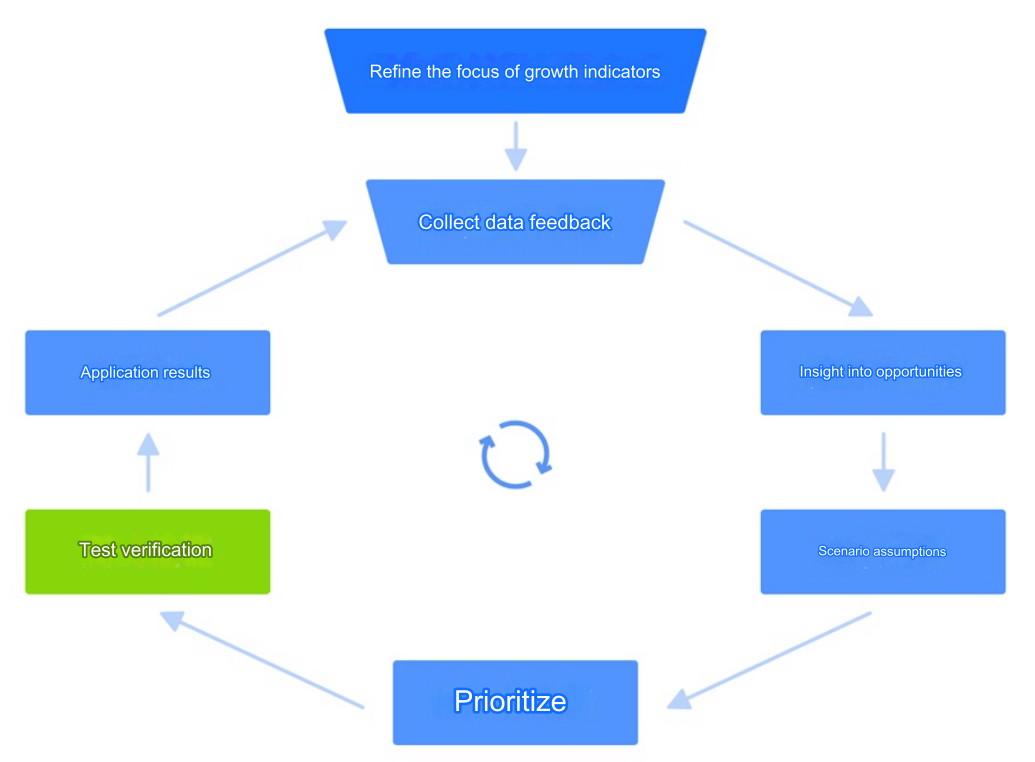Think managing more users requires more operators? Wrong! The key lies in the method. There’s an approach that enables a small team to effectively manage a massive user base. The core of this approach revolves around three key principles of user operations, which we will discuss today.

01 The Core Value of Large-Scale User Strategy Operations
Previously, we highlighted the focus of this series: sharing insights and methods for large-scale user strategy operations. However, many of you might not have directly experienced such operations before.
To deepen your understanding of this topic and improve the learning efficiency of subsequent sections, I’d like to take a moment to explore this concept with you.
What’s the greatest value of large-scale user strategy operations?
Let me answer directly: it allows us to manage and maintain a large user base with minimal manpower.
Here’s an example: imagine managing 100,000 users via community operations. If each group accommodates 100 users, we’d need 500 groups. Assuming one operator can manage 10 groups at a time, a team of 50 would be required to handle 100,000 users.
1. Boosting Efficiency Ratios
Did you know that in 2014-2015, when Sina Weibo had close to 100 million users, its user operations team consisted of fewer than 10 people? That’s right—fewer than 10 operators managed over 100 million users, with each person responsible for over 10 million users on average.
How did they achieve this? Their efforts were primarily focused on analyzing user growth paths and models, devising strategies, and implementing mechanisms. Instead of relying on manpower alone, they adopted a data-driven, refined, and automated approach to manage users efficiently.
This is the greatest value of large-scale user strategy operations: significantly improving efficiency ratios by managing and maintaining a massive user base with minimal resources. To excel in this, three core guiding principles must be applied across all products.
02 The Three Guiding Principles of Large-Scale User Strategy Operations
1. Data-Driven Approach
The first principle is data-driven operations. What does this mean, and what value does it bring? Let me present a perspective and illustrate it with examples: Internet products have a massive advantage over traditional products when it comes to data. An internet product that doesn’t fully utilize its data potential is like sitting on a gold mine but begging for money.
Let’s compare an example of a physical bookstore versus a reading app. Both involve reading and book purchasing, yet the data collection and user influence methods differ vastly.
Physical Bookstore:
User Information Collection: Limited to basic details like name, profession, gender, address, phone number, or WeChat (through membership registration). Collection is costly and difficult to scale.
Behavior and Consumption Data: Even in highly digitized chain bookstores, data is restricted to purchase preferences, location, and frequency. Most bookstores do not actively collect user behavior data.
Influencing Users: Limited to SMS, coupons, offline events, and manual recommendations.
This constrained environment restricts user scale to tens or hundreds of thousands, with minimal data per user and limited operational insights.
Reading App:
User Information Collection: Can gather gender, age, birthday, address, profession, family details, and more at low cost, even integrating profiles from platforms like WeChat or Weibo.
Behavioral Data Collection: Tracks every user action: reading preferences, time slots, speed, frequency, saved books, booklists, followed authors, notes, payments, shares, comments, and more. Additionally, app-level metrics like downloads, active users, retention, and user lifetime value (LTV) are easily accessible.
Influencing Users: Includes personalized recommendations, in-app notifications, push messages, and diverse incentive mechanisms.
In essence, internet products can accumulate far richer and larger datasets compared to traditional businesses. By leveraging this data to build user profiles and identify correlations between key behaviors and conversion goals, operators can derive actionable insights and design targeted strategies. Conversely, traditional businesses face severe limitations in data-driven operations.
Core Internet Product Data Categories:
Business Data (e.g., user count, activity levels, sales, orders): Evaluates overall business health.
User Profile Data (e.g., demographics): Builds user profiles, assigns labels, and identifies user traits.
Behavioral Data (e.g., in-app actions): Analyzes habits, growth paths, and critical behaviors affecting goals.
The granularity of data determines the depth of insights and the scope of refined operations. For strategy operations, data is fundamental.
2. Refined Operations
1) Definition of Precision Operations
Imagine this scenario: A reading app initially had 100,000 users, but after three months of rapid growth, the user base surged to 1 million. However, a problem arose—despite a tenfold increase in users, user activity and paid conversion rates dropped.
What does this indicate? The operational system that served 100,000 users was no longer adequate to meet the demands of 1 million users, resulting in declining efficiency. If human resources remain unchanged while the user base grows tenfold, we must find ways to improve operational efficiency. This is where precision operations come in.
In simple terms, as the user base of a product grows, a one-size-fits-all, broad-stroke operational strategy becomes inadequate to meet diverse user needs. At this point, targeted operational strategies tailored to user differences must be developed. This approach is the essence of precision operations.
For example, in the early days of Taobao, its homepage content was the same for all users. By around 2010, Taobao began displaying personalized homepage content based on user characteristics such as location and interests, a classic case of precision operations.
2) Four Dimensions of User Segmentation
The key to precision operations lies in user segmentation. Common segmentation dimensions include:
Demographic Attributes: Age, gender, occupation, etc.
Source Channels: Search engines, app stores, QR code scans, etc.
Usage Scenarios: At home, during commutes, at a café, etc.
Usage Process: Pre-registration, first use, advanced usage, etc.
Take the reading app as an example:
Demographic segmentation might divide the 1 million users into college students, working professionals (male and female), each with vastly different reading preferences, necessitating differentiated strategies.
Channel segmentation could distinguish between users who came via QR codes on books, those from the App Store, or those from WeChat promotions, as these users may have different characteristics.
Scenario segmentation could focus on contexts such as commuting, bedtime, or weekends, tailoring content recommendations accordingly.
Process segmentation could analyze varied user journeys, such as those moving directly from registration to paid membership versus those trying a free trial before paying, reflecting different user psychology.
3) Criteria for Effective Segmentation
How do we determine if user segmentation is effective? Two key criteria are:
Distinct Behavioral Characteristics: Segmented user groups should exhibit significant differences in key behaviors. For instance, if gender and age segmentation reveal minimal differences in reading preferences, the segmentation is ineffective.
Consistency and Regularity: Within each segmented group, behavior should exhibit certain patterns. If users from the same channel display highly diverse behaviors with no discernible trends, it becomes difficult to develop unified strategies for that group.
Effective segmentation enables targeted operations by ensuring significant behavioral differences between groups while maintaining consistency within each group.
4) Steps to Implement Precision Operations
The steps to implement precision operations typically include:
Define the Problem: Identify the operational issue to address—user acquisition, engagement, retention, or paid conversion?
Analyze Relationships: Study how user attributes, scenarios, channels, and processes relate to the operational goal and determine key segmentation dimensions.
Design Strategies: Develop operational plans based on the characteristics of segmented user groups, providing differentiated experiences.
Deploy and Optimize: Launch operational strategies, monitor results, and iteratively refine for increased accuracy.
Precision operations demand strong data analysis and strategy formulation skills from operators.
5) Key Insights on Precision Operations
Versatile Application: Precision operations are a foundational method that can address nearly all operational challenges, not just a specific tactic.
Basis for Systems: It forms the cornerstone for building a comprehensive user operations system, transitioning from broad-based to precise strategies.
Data Dependency: It relies heavily on user data. Without sufficient data on user demographics, behavior, and engagement, precision operations remain an unachievable ideal.
3. Automation and Mechanization
The third principle of large-scale user strategic operations is automation and mechanization.
1) Importance of Automation and Mechanization
To efficiently serve a vast number of users with limited manpower, relying on manual operations alone is unsustainable. Tools and systems must be employed to automate routine tasks and free human resources from repetitive labor.
For example:
Instead of manually sending messages to 1 million users, we can establish a rule where a welcome message is automatically sent three days after registration.
Develop algorithms for personalized recommendations embedded into automated systems, providing continuous 24/7 intelligent suggestions for users.
Automation and mechanization help scale operations, particularly as the user base grows.
2) Case Studies
Bookstore Membership Management:
As user scale increases, reliance on rules, systems, and mechanisms grows, evolving from manual management to systematized and automated operations.
500 Users: Managed via interpersonal relationships.
10,000 Users: Requires a basic membership system with special privileges.
1 Million Users: Introduces tiered membership (e.g., silver, gold, diamond) for differentiated service.
Reading App to Boost Book Purchase Rates:
Manual Promotion: Conduct periodic sales to stimulate purchases, which is effective but labor-intensive and unsustainable.
Automated Strategy: Identify high-potential users (e.g., users reading for 30 minutes daily without making purchases) and automatically offer a free three-day membership trial, effectively boosting purchase rates with minimal manual input.
3) Transition from Human-Driven to System-Driven Operations
As user operations scale up:
Transition from manual, human-driven processes to rule-based, system-driven mechanisms.
Automate processes to institutionalize best practices and enhance operational efficiency and stability.
Summary
1. Interconnected Principles
The three principles—data-driven, precision operations, and automation/mechanization—are interlinked:
Data analysis uncovers insights for targeted strategies.
Precision segmentation delivers personalized experiences.
Automation scales operations efficiently.
2. Scaling Operations by User Base
Small User Base: Manual, broad operations suffice.
Moderate Scale: Introduce segmentation and basic automation for enhanced efficiency.
Large Scale: Employ comprehensive data analytics, refined segmentation, and fully automated systems for sustained growth.
By mastering these three principles, operators can navigate the challenges of managing vast user bases, achieving efficient, accurate, and scalable operations.







